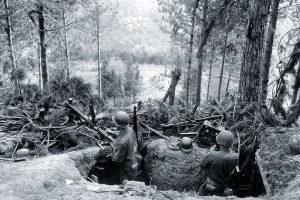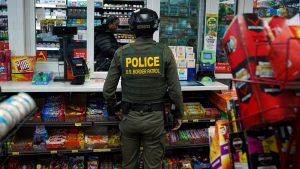NTSB: Key Bridge deaths were preventable. A new report reveals failures

Federal investigators say the six construction workers killed in the Francis Scott Key Bridge collapse could have survived if they had been warned. It’s one of several new findings released Tuesday.
The National Transportation Safety Board (NTSB) laid out the most detailed account yet of what went wrong before a cargo ship slammed into the Baltimore bridge in March 2024.
“This tragedy should have never occurred; lives should have never been lost,” NTSB Chair Jennifer Homendy said, calling the disaster “entirely preventable.”
Workers had nearly 90 seconds to escape, but warning never came
Investigators revealed that police officers stationed at the end of the bridge didn’t alert the construction team’s inspector that the Dali — a 984-foot container ship — had lost power and was drifting off course.
NTSB highway factors engineer Scott Parent said the workers would have had 1 minute and 29 seconds to drive to safety if they had received an emergency call. Instead, one officer planned to drive toward the crew after being relieved by another officer, a delay investigators say cost lives.
The workers’ vehicles were facing south. The crew member farthest from the safe span would have needed to drive 2,928 feet to survive. The warning never came.
A loose wire and months of improper repairs
Investigators outlined a series of mechanical issues that left the Dali unable to regain control:
- A single loose wire with an unstable electrical connection ultimately disconnected from its breaker — triggering a first blackout.
- For at least seven months before the crash, the crew used improper “flushing pumps” in place of the ship’s required fuel pumps.
- Those flushing pumps couldn’t automatically restart after a blackout, starving the system of critical fuel and causing a second power failure.
- The ship’s operator, Synergy Marine, “likely knew” the improper pumps were being used but didn’t stop it, investigators said.
Homendy compared the investigative challenge to “looking for a loose bolt in the Eiffel Tower,” given the size and wiring complexity of the ship.
A lack of protection — and no vulnerability assessment
Another major finding: the Maryland Transportation Authority had never conducted a required vulnerability assessment to determine whether the Key Bridge needed additional protections against vessel strikes.
NTSB board members emphasized that the bridge had no protective barriers, despite established national guidelines for assessing and mitigating the risk of catastrophic collapse.
The agency is issuing 17 new safety recommendations.
Rebuild now expected to cost up to $5.2 billion
Maryland officials also announced that reconstructing the Key Bridge will take two years longer than originally projected. It’s now expected to reopen in 2030 and could cost more than double the early estimates.
The new price range: $4.3 billion to $5.2 billion, compared to the original $1.9 billion estimate. Officials point to rising material costs, tariffs and a more robust protective design to shield the future bridge from ship strikes.
The post NTSB: Key Bridge deaths were preventable. A new report reveals failures appeared first on Straight Arrow News.








